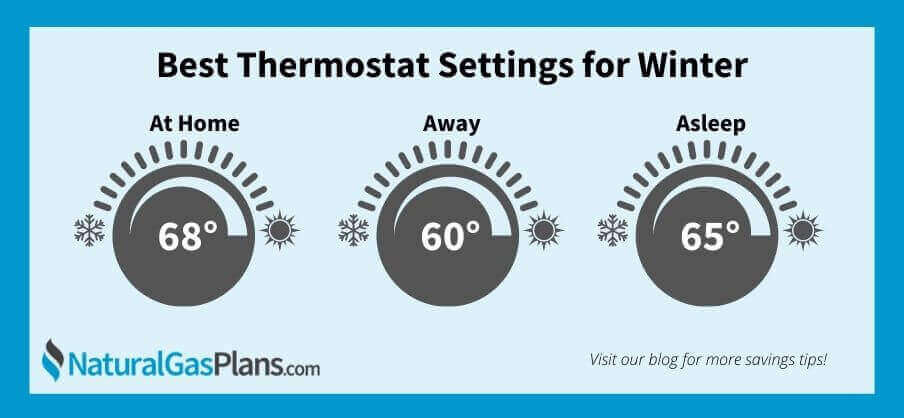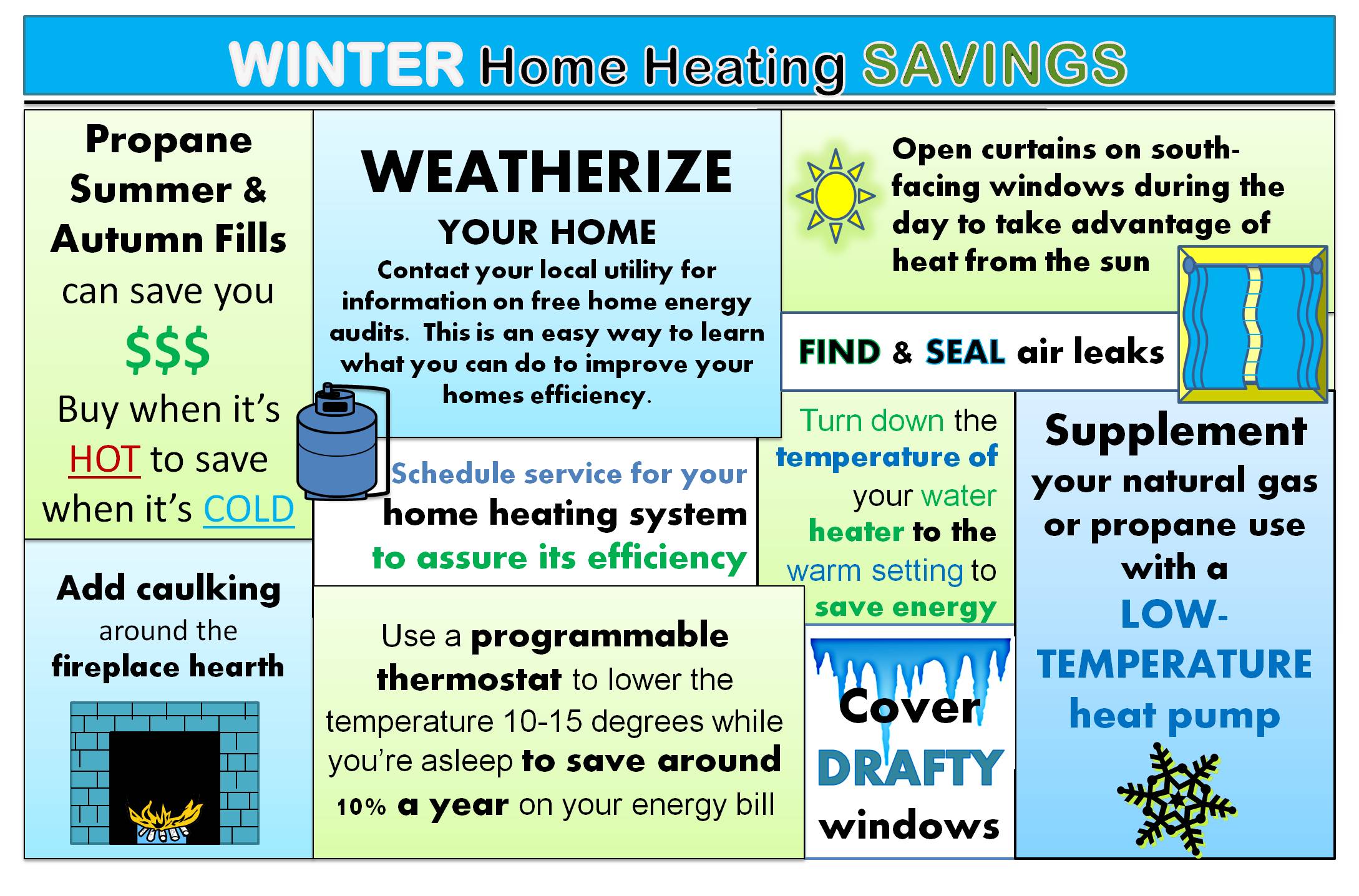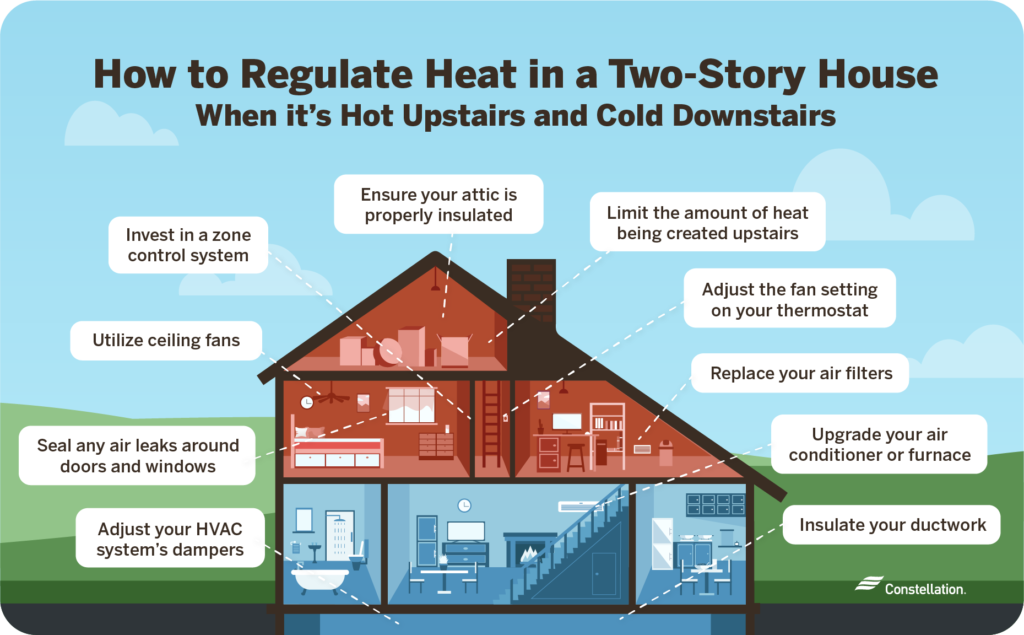What Temperature To Heat House In Winter

Winter's chill can send energy bills soaring, but finding the sweet spot for your thermostat is key to staying comfortable without breaking the bank. This guide will explore the optimal winter heating temperatures for homes and businesses, incorporating smart technology, government guidelines, and practical tips to maximize energy efficiency and minimize costs.
Understanding the Energy Star Recommendations
The Energy Star program, a joint initiative of the U.S. Environmental Protection Agency (EPA) and the U.S. Department of Energy (DOE), provides valuable guidelines for energy-efficient practices. When it comes to winter heating, Energy Star recommends setting your thermostat to 68 degrees Fahrenheit (20 degrees Celsius) when you're home and awake.
Why 68 degrees? This temperature strikes a balance between comfort and energy savings. For every degree you lower your thermostat for eight hours or more, you can save up to 1% on your heating bill. That might not seem like much, but it adds up over the course of a winter.
The Power of Setback Temperatures: Saving Money While You Sleep or Away
The real energy-saving magic happens when you lower the thermostat while you're asleep or away from home. Energy Star recommends a setback temperature of 62 degrees Fahrenheit (16.5 degrees Celsius) for these periods. Some sources even suggest going down to 55 degrees Fahrenheit (13 degrees Celsius) if you will be away for extended periods, though this should be approached with caution as it can cause pipes to freeze in extremely cold climates.
Here's why this works: Your home loses heat to the outside environment based on the temperature difference between inside and outside. By lowering the thermostat, you reduce this temperature difference, slowing down the rate of heat loss and requiring your furnace to work less. Imagine a scenario where the outside temperature is 30 degrees Fahrenheit. Keeping your home at 68 degrees requires a 38-degree temperature difference. But setting back to 62 degrees reduces that difference to 32 degrees, significantly lessening the load on your heating system.
Calculating the Potential Savings
Let's say you typically keep your thermostat at 72 degrees Fahrenheit. By lowering it to 68 degrees during the day and 62 degrees at night (for 8 hours), you could potentially save 4-8% on your heating bill. If your annual heating bill is $1,000, that translates to $40-$80 in savings. Over several years, these savings can become substantial.
The Smart Thermostat Advantage: Automation and Optimization
Traditional thermostats require manual adjustments, which can be inconvenient and often lead to inconsistent temperature settings. Smart thermostats revolutionize home heating by automating temperature adjustments based on your schedule, preferences, and even external factors like weather forecasts.
Here's how smart thermostats contribute to energy savings:
- Programmable Schedules: Set different temperatures for different times of the day and days of the week, ensuring your home is only heated to the desired temperature when you need it.
- Geofencing: Automatically adjust the thermostat based on your location. When you leave home, the thermostat lowers the temperature; when you approach, it starts warming up the house.
- Learning Capabilities: Some smart thermostats learn your heating and cooling patterns and automatically adjust the temperature to optimize energy savings without sacrificing comfort.
- Remote Control: Monitor and adjust your thermostat from anywhere using your smartphone or tablet, ensuring you never accidentally leave the heat running unnecessarily.
- Integration with Other Smart Home Devices: Integrate your smart thermostat with other smart home devices like window sensors and occupancy sensors to further optimize energy efficiency.
- Energy Reports: Track your energy usage and identify areas where you can save even more.
Many utility companies offer rebates on smart thermostats, further reducing the initial investment and making them an even more attractive option.
Beyond the Thermostat: A Holistic Approach to Energy Efficiency
While adjusting your thermostat is a crucial step, it's essential to take a holistic approach to energy efficiency to maximize savings and comfort. Here are some additional measures you can take:
- Improve Insulation: Proper insulation in your attic, walls, and floors prevents heat from escaping, reducing the load on your heating system.
- Seal Air Leaks: Caulk and weatherstrip around windows and doors to prevent drafts and air leaks.
- Upgrade Windows and Doors: Energy-efficient windows and doors can significantly reduce heat loss.
- Maintain Your Heating System: Schedule regular maintenance for your furnace or heat pump to ensure it's operating efficiently. Clean or replace filters regularly.
- Use Space Heaters Wisely: While space heaters can provide localized warmth, they consume a significant amount of energy. Use them sparingly and only in occupied rooms.
- Utilize Passive Solar Heating: Open curtains and blinds during the day to allow sunlight to warm your home, and close them at night to retain heat.
Business Considerations: Balancing Comfort and Cost Savings
For businesses, the optimal heating temperature involves balancing employee comfort and energy costs. While the Energy Star recommendation of 68 degrees Fahrenheit applies, businesses may need to adjust the temperature based on the type of work being performed and employee preferences. Offering employees the ability to adjust their immediate workspace temperature with small, localized heaters or fans can improve employee satisfaction while keeping central system temperatures set for overall energy efficiency.
Implementing a smart HVAC system in a commercial building can provide significant energy savings. Zone control allows you to heat only occupied areas, while occupancy sensors can automatically adjust the temperature based on occupancy levels. Furthermore, commercial building owners should explore available rebates and incentives for energy-efficient HVAC upgrades.
The Importance of Regular HVAC Maintenance
A well-maintained HVAC system is crucial for optimal efficiency and longevity. Regular maintenance, including filter changes, duct cleaning, and professional inspections, can prevent breakdowns, improve airflow, and ensure your system is operating at peak performance. Consult with a qualified HVAC technician to develop a maintenance schedule tailored to your specific system and climate.
Neglecting maintenance can lead to decreased efficiency, higher energy bills, and potentially costly repairs down the road. Think of it like a car: you wouldn't skip oil changes and expect it to run smoothly indefinitely. Your HVAC system requires similar care to ensure it performs optimally and lasts for years to come.
Rebates and Incentives for Energy-Efficient Heating
Many utility companies, state governments, and federal agencies offer rebates and incentives for homeowners and businesses who invest in energy-efficient heating equipment and practices. These incentives can significantly reduce the upfront costs of upgrades like smart thermostats, high-efficiency furnaces, and insulation improvements. Check with your local utility company and state energy office to explore available programs.
The federal government also offers tax credits for certain energy-efficient home improvements. Consult a tax professional to determine eligibility and maximize your savings.
Conclusion: A Smart Approach to Winter Heating
Finding the right heating temperature is a balancing act between comfort and cost savings. By following Energy Star guidelines, utilizing smart thermostat technology, implementing energy-efficient home improvements, and taking advantage of available rebates and incentives, you can significantly reduce your winter heating bills without sacrificing comfort. Embrace a smart approach to winter heating and enjoy a warmer home and a healthier bank account.










